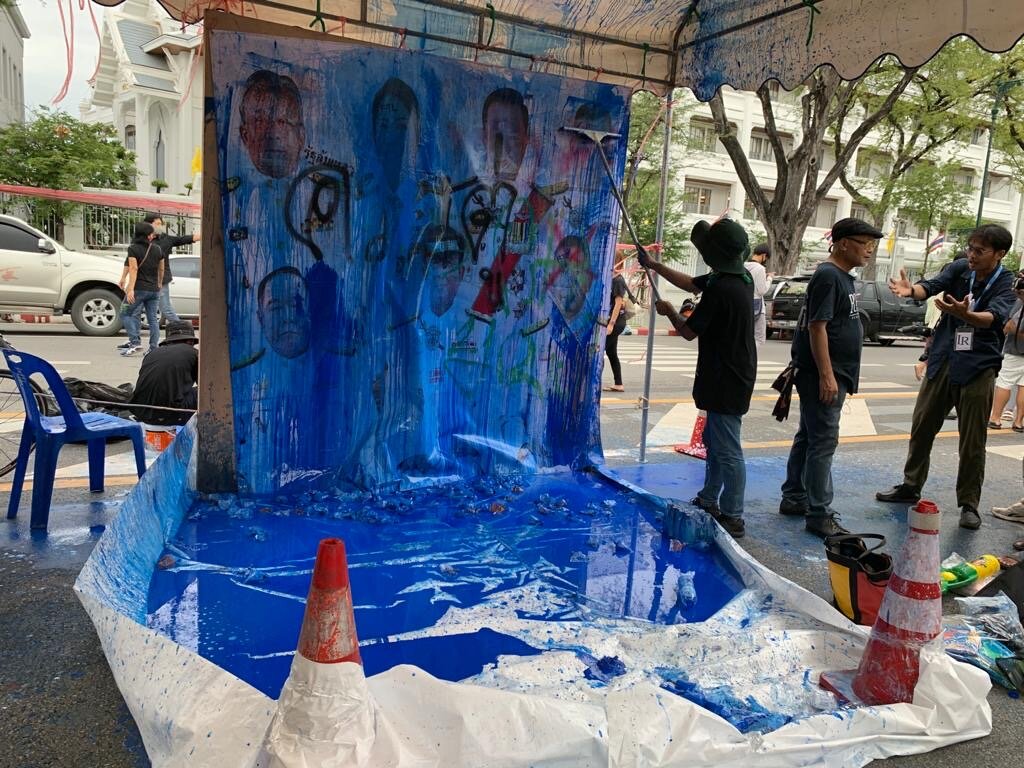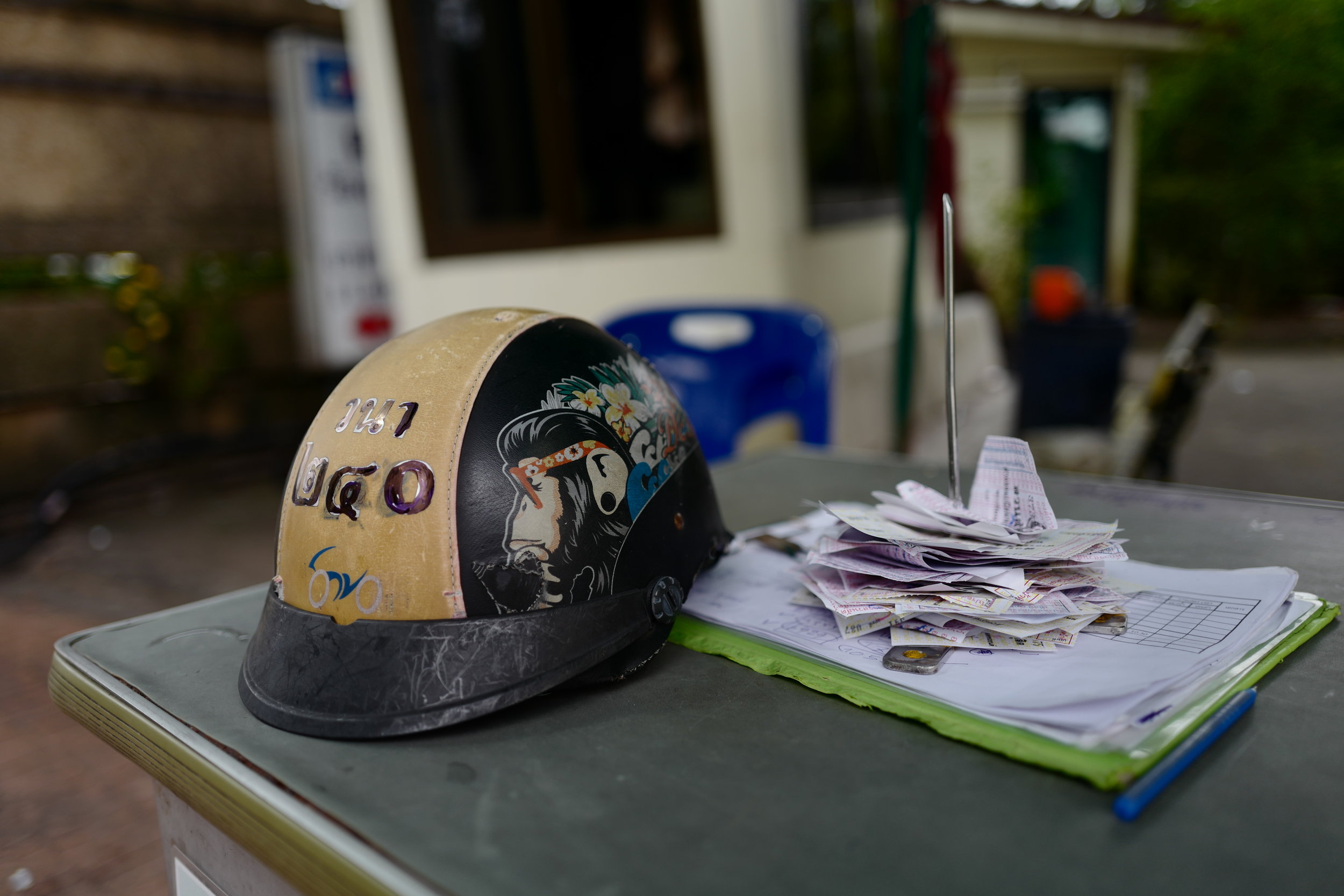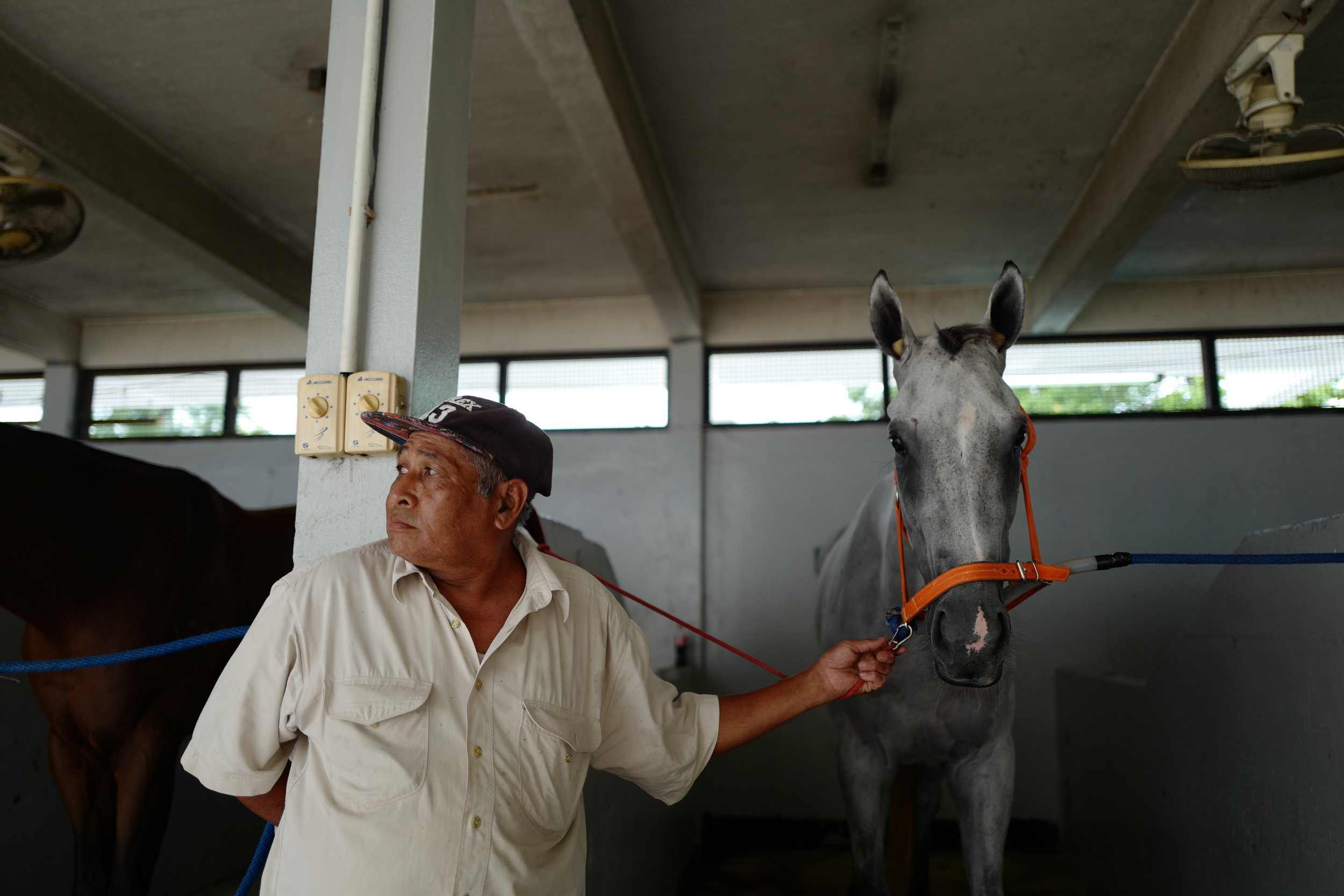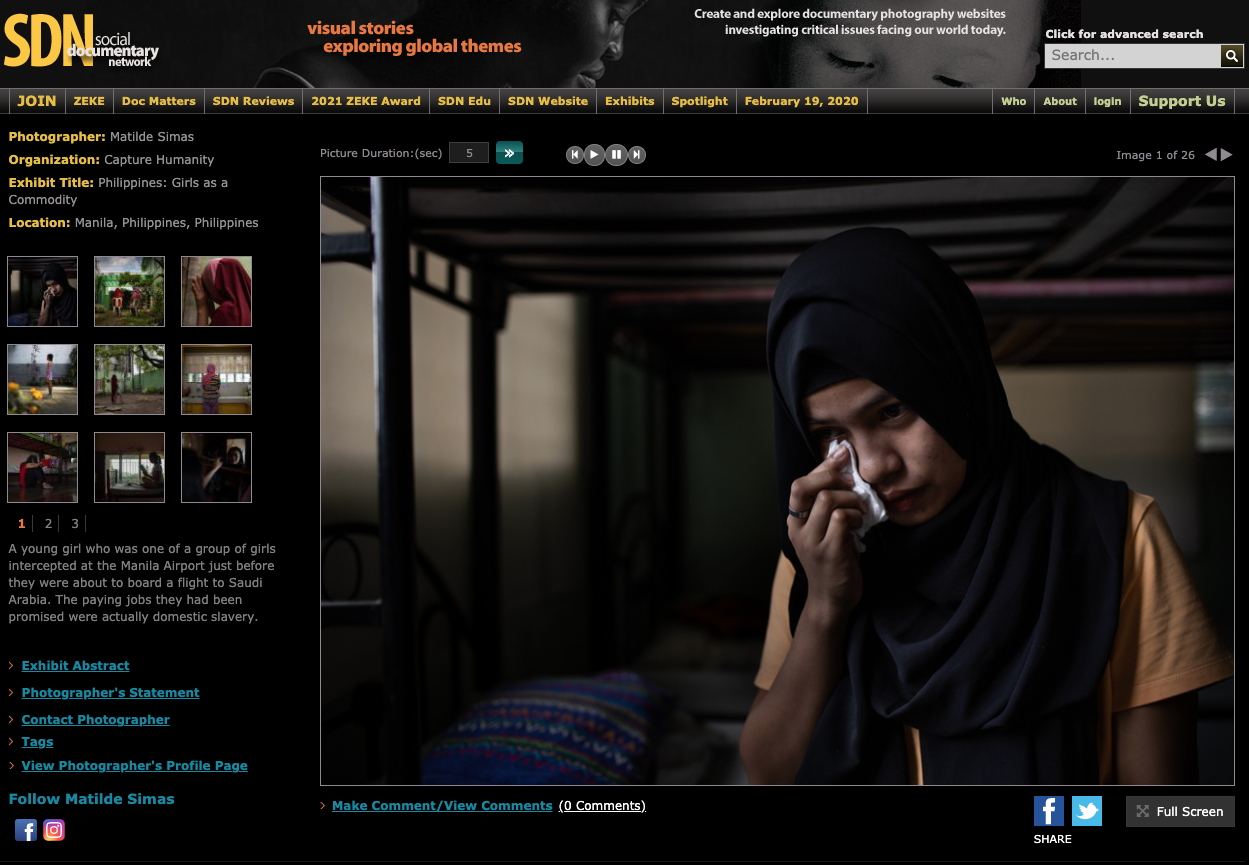Photo essays
Social Documentary NetworK exhibitS
“Philippines: Girls as a commodity” - Matilde simas
“Philippines: Girls as a Commodity” sheds light on the plight of children who are sold into domestic servitude and the cybersex trade in the Philippines. Through real-time photo capture the series is an intimate look at the healing and recovery processes of rescued Filipino girls living in a non-governmental organization (NGO) shelters. At the shelters, survivors are provided with legal, psychological, and protective support. They receive counseling, medical assistance, skills training, education, and an opportunity to practice sports.
The Philippines has been identified as a global epicenter of live-stream sexual abuse trade, with around 80% of Filipino children at risk of online sexual abuse (UNICEF, 2016). The Department of Justice reported a 264% increase in the number of incidents of online sexual abuse of children during March to May 2020, the first three months of the government-imposed quarantine to contain COVID-19.
While not always visible, the girls' images reveal there is necessary work entailed in their recovery process. As a result of this project I learned victims of trafficking are left to endure irreversible psychological damage as a result of their trauma.
Click here to view the exhibit.
“Resilience” - Francesco Berlingerio
Resilience is a long term project, which is a result of a journey in South East Asian countries: Laos, Vietnam Cambodia and Myanmar.
Between August 2019 to March 2020, I crossed 4 borders and I arrived in Myanmar.
I’ m fascinated by the never - ending imbalances typical of South East Asian environments, to tell what somehow exist but is always out of the spotlights, given that mostly, there is a tendency of pointing on touristic attractions, leaving aside all the rest.
I surprisingly learnt that, in such hidden places, people become more Resilient and this is the only way they have, to resist and respond to coercion and control, although more often, they do this, illegally and precariously.
Poverty, corruption, deprivation, cohercive military regimes, undermine the people ‘s freedom and right to make their own decision and choices.
This is having a long lasting impact, on their sense of belonging, identity, cognitive and social development.
Furthermore, the Chinese control and imperialism, is expanding rapidly.
This economical path, does not support the people’s welfare and triggers inequalities , gender differences and human rights violations.
Click here to view the exhibit.
Issues are dead-serious but Thai protestors spice up protests with color, creativity and a sense of fun








Thailand saw the biggest popular protests since the 2014 military coup on the weekend of Sept 19-20, led by students of Thammasat University, scene of a notorious massacre of students in October 1976. More than 30,000 people (student leaders claimed triple that number, while police estimated 18,000) crowded into Sanam Luang, the vast square in front of the Grand Palace and Thammasat University, from about 2:00 pm on Saturday. The student-led demonstration was a watershed in many respects, not least in the way it drew together an extraordinary mix of people - from the elderly to young, from rural poor to urban professionals. The protests carried on through the weekend, culminating in a march on the Grand Palace at dawn on Sunday. Where it all leads will become apparent in coming weeks. The next demonstrations are scheduled for Sept 24 and October 6, the date of the 1976 massacre.
All photos by Gwen Robinson, Nikkei Asian Review Editor-at-large & Senior Fellow at Chulalongkorn University's ISIS (Thailand).
Turning the Tide on the Relentless Destruction of Cambodia’s Forests




Photographer Sean Gallagher traveled to Cambodia to document the devastation of the nation’s forests. In an e360 photo essay, he shows how timber and agribusiness companies are ravaging lands that are supposedly protected and how Indigenous people are trying to stop the destruction. This photo project was supported by the Pulitzer Center on Crisis Reporting.
To view the full gallery, click here.
“ROHINGYA: WE PREFER TO CALL IT BURMA” - Keith harmon snow




"Rohingya: We Prefer to Call it Burma," a collection of photos by Keith Harmon Snow, examines the plight of 'stateless' Rohingya refugees trapped in the Cox's Bazaar and Tecnaf districts of Bangladesh. Many Rohingya call their country Burma, rejecting Myanmar (assigned by the military in 1989).
These photographs depict conditions in the camps, and provide documentary evidence and testimonials of genocide committed against Rohingya people by the Burmese military. They also juxtapose and situate the Rohingya in relation to the host community and surrounding areas.
Some one million Rohingya struggle to survive in heavily populated Bangladesh. This has caused conflict with Bangladeshis, esp. due to the uneven distribution of resources by the charity & aid complex. As more resources are depleted by the joint populations, these problems continue to grow.
Violence in Burma continues. Rohingya are being trafficked out of the camps and fleeing Burma by boat, sometimes trapped at sea, held ransom, or killed. Talk is cheap and ubiquitous, but there has been little substantive international action or commitment to truly help the Rohingya people.
Click here to view the exhibit.
Duncan mccargo




The counters in the old admission gates have stopped forever at Bangkok’s Dusit Zoo, which closed its doors in September 2018 after delighting generations of Thai children – and adults – for eighty years. Quirky highlights included Mali, a 51-year old hippo, and a curious second world war museum featuring an old air raid shelter.
See my article here.






Bangkok’s Dusit Turf Club closed its gates in September 2018, after more than a century. I took these photographs during one of the final days of racing that August.


